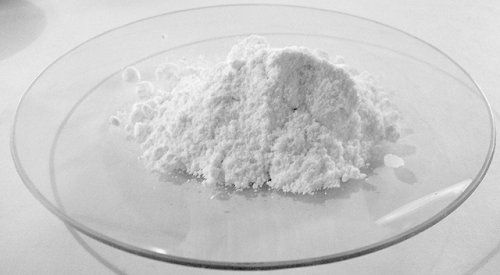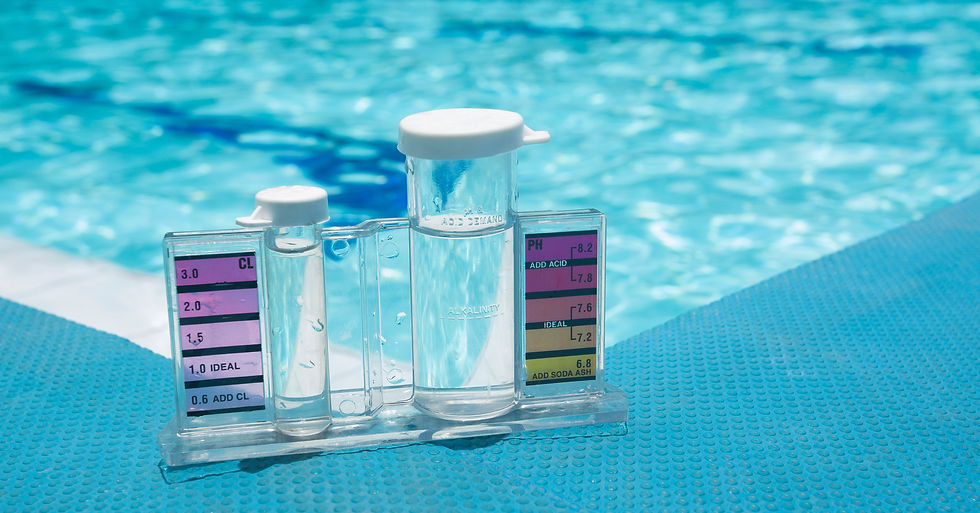Sodium Carbonate: Natural Formation to Modern Application
- Sylvia Rose

- Oct 25, 2024
- 5 min read
Updated: Dec 25, 2024
Sodium carbonate, also known as soda ash or washing soda, is prominent across various industries for millennia. It's used in ancient and Renaissance alchemy, Egyptian embalming, glass making, household and modern scientific applications.

What is Sodium Carbonate?
Sodium carbonate (Na₂CO₃) is an inorganic salt consisting of sodium ions (Na⁺) and carbonate ions (CO₃²⁻).
It appears as a white, odorless powder or crystalline solid. Sodium carbonate has a range of pH-dependent properties, making it useful in applications where chemical adjustments are necessary.
It has a high solubility in water and exhibits alkaline properties, making it useful in numerous chemical reactions. Sodium carbonate naturally forms in mineral deposits and is also manufactured industrially, resulting in various grades for different applications.

How is Sodium Carbonate Made or Formed in Nature?
Sodium carbonate often occurs in nature often as the mineral trona (Na₃H(CO₃)₂·2H₂O), which reveals itself in salt lake deposits. The mineral is created through natural evaporation of water from lakes and oceans, along with the presence of sodium and carbonate ions.
Another natural source is the mineral natron. It's a mixture of sodium carbonate and sodium bicarbonate (baking soda). Over time, various geological processes contribute to formation of the minerals, which can be mined and processed for industrial use.
Sodium carbonate is also found as mineral deposit nahcolite. Nahcolite is another mineral prevalent in saline lakes and alkaline soils, where evaporation leads to a concentration of sodium and carbonate ions.

The industrial Solvay process is a common method for creating sodium carbonate. The process reacts sodium chloride (table salt), ammonia and carbon dioxide in water, creating a synthetic form. The Solvay method accounts for about 80% of sodium carbonate production globally.
How Does It Occur in the Environment?
Sodium carbonate is present in several environmental contexts. The most notable occurrences are found in arid or semi-arid regions where evaporation ponds and alkaline lakes are common.
These environments allow for high concentrations of dissolved sodium and carbonate ions, fostering the crystal growth of trona and natron. Sodium carbonate can also be found in groundwater, particularly in areas with sedimentary rocks that contain sodium-rich minerals.

In such settings, sodium carbonate solutions can influence the chemical equilibrium of the surrounding ecosystem. Alkaline lakes and soda lakes, rich in sodium carbonate, support unique organisms adapted to high-pH conditions.
Geological formations can trap sodium carbonate. This results in deposits formed over thousands of years as groundwater interacts with minerals.
When Is Sodium Carbonate Discovered and First Used?
Sodium carbonate has a long history, dating back to ancient times. The Egyptians famously use natron for mummification and as a cleansing agent. The word "soda" originates from the Latin "sodanum," meaning "salty."

By the 13th century, sodium carbonate is widely recognized and used in Europe, primarily as a glass-making ingredient and a key component in soap.
In the 18th century, the Leblanc process is developed to synthesize sodium carbonate from salt, sulfuric acid, and limestone, marking the beginning of industrial production.
The use of sodium carbonate goes back to 2000 BCE in ancient Egypt. It's primarily used in glassmaking (after 1250 BCE) and textile production. Its importance grows particularly during the 19th century, when industrial chemistry advances, leading to commercial production.
Today, the global market for sodium carbonate is valued at approximately $15 billion.
Can Sodium Carbonate Be Made in the Lab?
Sodium carbonate is easily synthesized in a laboratory setting using several methods, including the reaction of sodium bicarbonate (baking soda) with heat. When sodium bicarbonate is heated, it decomposes into sodium carbonate, carbon dioxide, and water.

Use in Glass Making with Silica
One of the primary industrial uses of sodium carbonate is in glass manufacturing. In the glass-making process, sodium carbonate serves as a flux, reducing the melting temperature of silica (SiO₂). This makes it easier to shape and mold glass products, saving energy and time.
A combination of soda ash and silica improves glass production, enabling manufacture of a variety of glass types, including container glass, flat glass, and fiberglass. The energy costs associated with glassmaking are significantly higher if sodium carbonate is not used.
Soda-lime glass, which incorporates sodium carbonate, is the most common type used for windows and containers, accounting for over 90% of the glass produced in North America.

Other Uses in History and Modern Day
Besides its integral role in glass production, sodium carbonate has a diverse array of applications across different industries:
Household Cleaning: Sodium carbonate is a common ingredient in laundry detergents and cleaning products. It effectively removes stains and adjusts the pH of the wash water.
Chemical Manufacturing: The compound is utilized in the production of various chemicals, including sodium bicarbonate, sodium silicate, and colorants.
Food Processing: In certain contexts, sodium carbonate can be used as a food additive to regulate acidity or for leavening purposes.
Water Softening: Sodium carbonate is often used in water treatment processes as it effectively reduces water hardness by precipitating calcium and magnesium ions.
pH Regulation: Its capabilities as a mild alkaline substance make it valuable in pools and aquariums to maintain balanced pH levels.
Sodium carbonate is historically essential in soap making because it softens water, making lathering easier. Nowadays, sodium carbonate is widely used in detergents, swimming pool pH regulation, and food processing as an acidity regulator.

Sodium carbonate is also foundational in textile processing, and various artistic applications. For instance, in watercolor painting, it helps adjust pH, allowing pigments to mix better. Its broad use across different sectors highlights its versatility.
For example, it is used as a pH regulator to maintain stable alkaline conditions necessary for photographic film developing agents. In dyeing with fiber-reactive dyes, sodium carbonate as soda ash fixative or soda ash activator, is used
to ensure proper chemical bonding of the dye with cellulose (plant) fibers, typically before dyeing (for tie dyes),
mixed with the dye (for dye painting)
after dyeing (for immersion dyeing)
Facts About Sodium Carbonate
Chemical Formula: Na₂CO₃
Molecular Weight: 105.99 g/mol
Melting Point: About 851°C (1564°F)
Solubility: Highly soluble in water, with a solubility of approximately 220g/L at 20°C (68°F).
Appearance: Odorless white powder or crystalline solid.
Ecological Impact: Sodium carbonate is generally considered to be non-toxic in low concentrations; however, large amounts can disrupt aquatic ecosystems.
Common names: Also referred to as soda ash, washing soda, and soda crystals.

Non-Fiction Books:
Fiction Books:
READ: Lora Ley Adventures - Germanic Mythology Fiction Series
READ: Reiker For Hire - Victorian Detective Murder Mysteries


